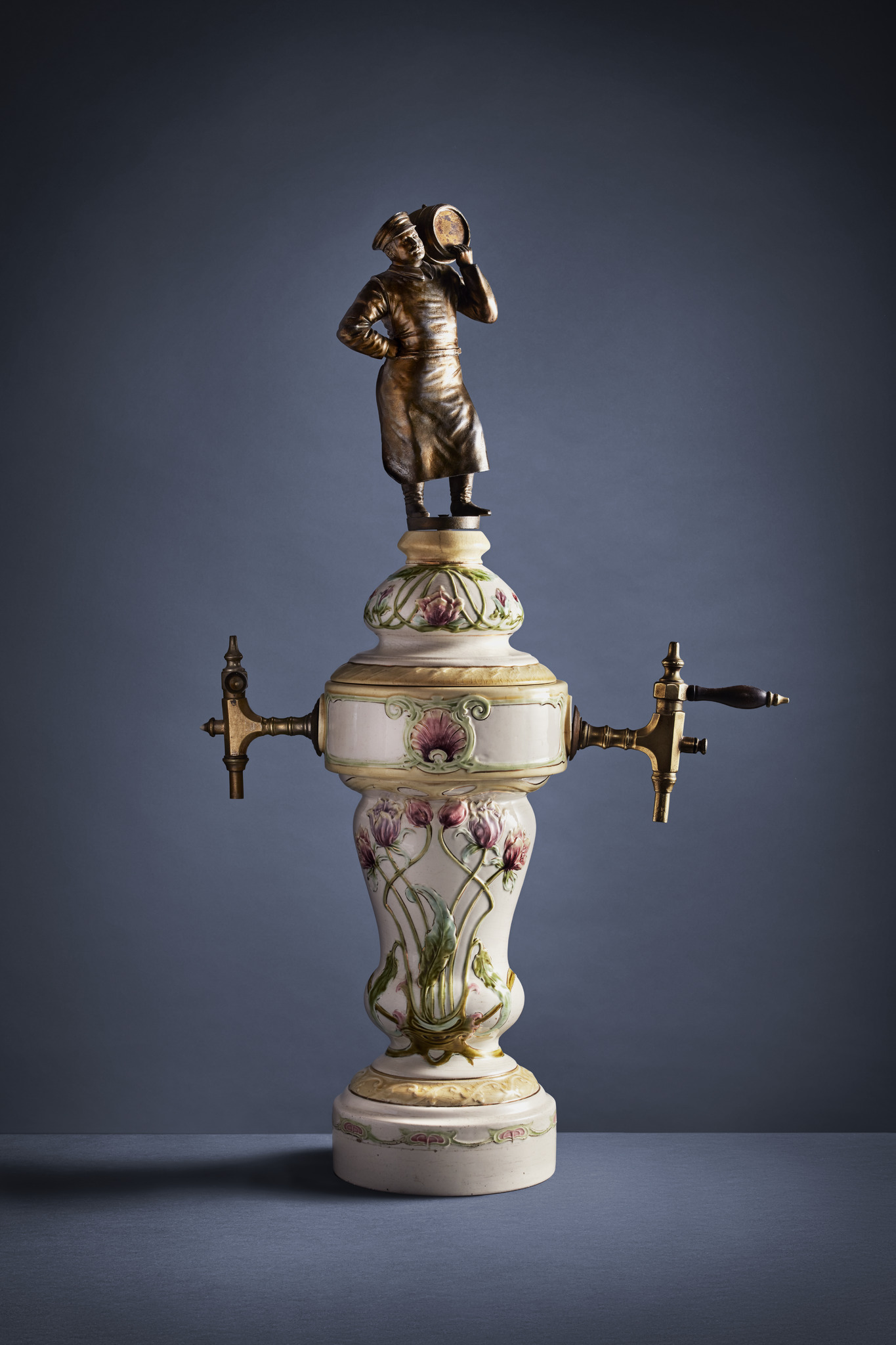INFO
Round light box with red star and inscription ‘Heineken’s Beer'
1950-1959
Wrought iron, plastic, paint
h 80 x w 80 cm

Homegrown design
In the 1950s, this illuminated advertisement indicated that the premises housed a café. A ‘brown café,’ that is: a typical Dutch phenomenon that owes its name to the dark atmosphere, with wallpaper and curtains that have often turned brown from the clouds of smoke from cigars and cigarettes.
Everything in such a traditional pub with sparse lighting from corny lamps, with dark brown woodwork and a Persian carpet on the table, exudes a comforting homeliness. This is hardly surprising considering it evolved from the living room pub, a phenomenon from the early 19th century.
Additional income
By opening their tiny front rooms to a drinking public (read: male workers and shipmen), city dwellers – mostly female – earned a penny on the side. They joined forces with the pubs that had emerged from inns and liquor stores. However, in 1881 the law ‘to regulate the trade in hard liquor and the curbing of public drunkenness’ came into force, requiring the living room pubs to obtain an expensive licence. Those who could afford it professionalised into a ‘brown pub’; the rest simply disappeared.
Competition
During the 1880s, brown pubs faced competition from German beer halls, where highly educated toffs and artsy types enjoyed German clear beer at long tables. Genteel coffee houses, meanwhile, evolved into grand cafés, where Heineken and Amstel beer flowed from porcelain beer taps. At the same time, big cities were expanding rapidly; first with cheap working-class barracks and in the 1920s and 1930s with better social housing. New neighbourhood pubs emerged in these districts, in the nostalgic ‘living room style’ of yesteryear. Heineken also tied these brown pubs to itself by investing in loans to new clients, with the stipulation that they would only serve Heineken beer. The brewer also took care of both indoor and outdoor advertising.

An urban legend is good advertising
To win back the on-trade public during the post-Second World War reconstruction, Heineken poured great effort into all manner of advertising. For instance, for their outdoor advertising pubs and restaurants that served Heineken received these round light boxes with a red logo around the five-pointed ‘Heineken star.’ There is an interesting urban legend relating to this. The owner of the Leiden De Vergulde Kruik pub is said to have had this logo designed for his establishment’s signboard. Apparently, the Heineken company was so taken with the design that they bought it for 25 guilders and used it specifically on signs and on beer caps and coasters. Is any of this true? To date, no conclusive evidence of this has surfaced ...